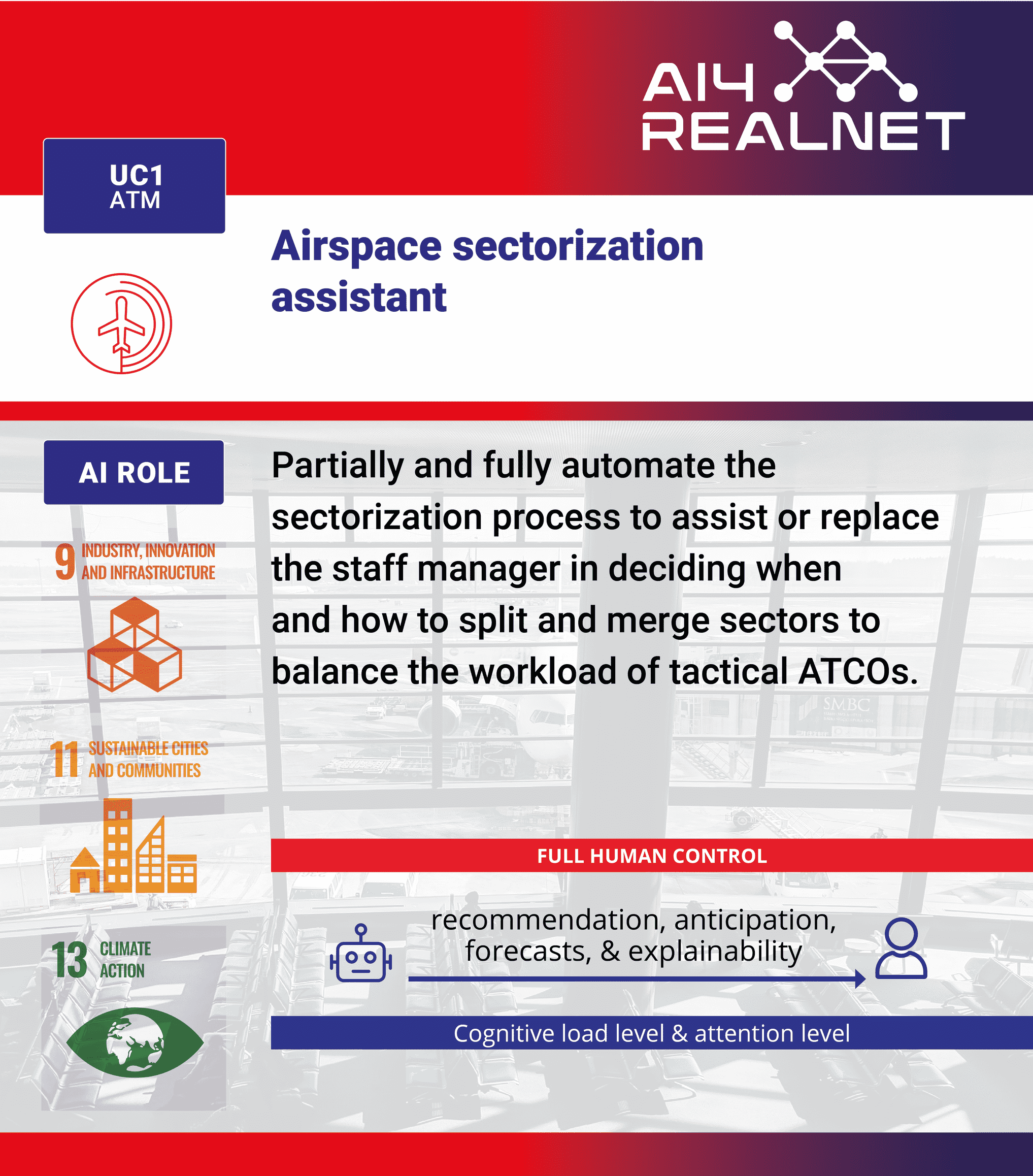Air Traffic Network Use Case 1
Airspace sectorisation assistant
Context and motivation: Air traffic density in European airspaces is steadily increasing. At the same time, pressing economic and environmental concerns force a fundamental shift towards time- and trajectory-based air traffic operations. Taken together, increased traffic loads and operational complexities may eventually drive the workload peaks of the tactical air traffic controller (ATCO) beyond acceptable thresholds, threatening the overall safety of the Air Traffic Management (ATM) system and hindering a smooth transition toward a sustainable future of ATM. Today, sectorisation is the sole responsibility of the air traffic control (ATC) supervisor, who exclusively decides when and how to split and merge sectors best, warranted by situational demands and available ATCO personnel. Only scattered information is available on different platforms to aid ATC supervisors in this task. Still, there is no traffic pre-analysis tool and/or integrated decision-support system for assisting in or fully automating the sectorisation process.
Problem formulation: At Air Traffic Control Centres (ATC), an operational supervisor exclusively decides when and how to split and merge sectors best, warranted by situational demands and available ATCO personnel. The degrees of freedom in sectorization involve considering horizontal (2D geometry) and/or vertical (altitude) constraints and can thus result in split sectors horizontally and/or vertically. Under nominal conditions, the supervisor typically can install several pre-fab sectorisation options. However, unexpected events, such as deteriorated weather conditions, flight emergencies (e.g., aircraft equipment failure), and unscheduled ATC personnel shortages (e.g., due to sickness) may require non-standard sectorisations to be installed. An AI assistant, capable of operating under various levels of automation, will provide recommendations or even execute decisions on splitting the sector best horizontally, vertically, or both to balance the ATCO workload while ensuring safety and efficient traffic flows. It will also act bidirectionally by allowing the human operator to nudge the AI-generated recommendations in more favourable directions.
Stakeholders: ATC supervisor, Air Navigation Service Provider responsible for the flight information region, tactical air traffic controller, airlines and pilots.
Threats and vulnerabilities: Accountability, who is responsible for the bad performance of the AI system. Air traffic operations can be affected by events related to unexpected weather, flight emergencies, and unscheduled ATC personnel shortages. Access to high-quality, real-time data will be required to ensure optimal decision-making.
Key benefits: Facilitate continuing growth of air traffic demand while maintaining a high level of safety. Improve predictability of a certain sectorisation over a certain time horizon.
Download the Use Case file to see the complete description!
